|
 |
|
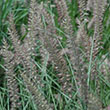
Dark, smoky rose-purple flower spikes. Deep green arching foliage. USDA 5-8
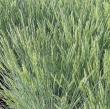
Height: 8 inches
Spread: 12 inches
Sunlight: full sun, partial shade
Hardiness Zone: 2b
Other Names: Festuca ovina var. glauca
Description:
A dwarf ornamental grass featuring bright silver-blue foliage; neat mounds of densely tufted leaves stay blue all season long; tall upright tan plumes sway in the breeze; drought tolerant once established, great for containers, beds and borders
Ornamental Features:
Elijah Blue Fescue is primarily valued in the garden for its interestingly mounded form. Its attractive grassy leaves remain blue in color throughout the year. The tan seed heads are carried on spikes from mid summer to late fall.
Landscape Attributes:
Elijah Blue Fescue is an herbaceous evergreen perennial grass with a mounded form. It brings an extremely fine and delicate texture to the garden composition and should be used to full effect.
This is a relatively low maintenance plant, and is best cleaned up in early spring before it resumes active growth for the season. It has no significant negative characteristics.
Elijah Blue Fescue is recommended for the following landscape applications:
- Rock/Alpine Gardens
- Border Edging
- General Garden Use
- Naturalizing And Woodland Gardens
- Container Planting
Planting & Growing:
Elijah Blue Fescue will grow to be about 8 inches tall at maturity, with a spread of 12 inches. Its foliage tends to remain low and dense right to the ground. It grows at a medium rate, and under ideal conditions can be expected to live for approximately 8 years. As an evegreen perennial, this plant will typically keep its form and foliage year-round.
This plant does best in full sun to partial shade. It prefers to grow in average to dry locations, and dislikes excessive moisture. It is considered to be drought-tolerant, and thus makes an ideal choice for a low-water garden or xeriscape application. It is not particular as to soil type or pH. It is highly tolerant of urban pollution and will even thrive in inner city environments. This is a selected variety of a species not originally from North America. It can be propagated by division; however, as a cultivated variety, be aware that it may be subject to certain restrictions or prohibitions on propagation.
Elijah Blue Fescue is a fine choice for the garden, but it is also a good selection for planting in outdoor pots and containers. It is often used as a 'filler' in the 'spiller-thriller-filler' container combination, providing a canvas of foliage against which the thriller plants stand out. Note that when growing plants in outdoor containers and baskets, they may require more frequent waterings than they would in the yard or garden.
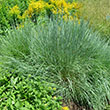
Upright clumps of slender, flat, linear bluish green leaves. Purplish-bronze blooms. Tolerates black walnut. USDA 3-9
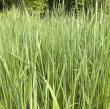
Height: 5 feet
Spread: 32 inches
Sunlight: full sun, partial shade
Hardiness Zone: 3a
Other Names: Feather Reed Grass
Description:
Dramatic red-copper plumes are eye catching during the early to mid summer months; a cool weather performer that looks wonderful in fresh or dried flower arrangements, borders or garden landscapes; heat tolerant and low maintenance
Ornamental Features:
Karl Foerster Reed Grass is primarily grown for its highly ornamental fruit. The tan seed heads are carried on showy plumes displayed in abundance from late summer to late winter. It features bold plumes of brick red flowers with coppery-bronze overtones rising above the foliage in mid summer. Its grassy leaves are green in color. The foliage often turns tan in fall. The gold stems can be quite attractive.
Landscape Attributes:
Karl Foerster Reed Grass is an herbaceous perennial grass with an upright spreading habit of growth. It brings an extremely fine and delicate texture to the garden composition and should be used to full effect.
This plant will require occasional maintenance and upkeep, and is best cut back to the ground in late winter before active growth resumes. It has no significant negative characteristics.
Karl Foerster Reed Grass is recommended for the following landscape applications:
- Vertical Accent
- Mass Planting
- General Garden Use
- Groundcover
- Naturalizing And Woodland Gardens
- Container Planting
Planting & Growing:
Karl Foerster Reed Grass will grow to be about 4 feet tall at maturity, with a spread of 32 inches. It tends to be leggy, with a typical clearance of 1 foot from the ground, and should be underplanted with lower-growing perennials. It grows at a medium rate, and under ideal conditions can be expected to live for approximately 10 years. As an herbaceous perennial, this plant will usually die back to the crown each winter, and will regrow from the base each spring. Be careful not to disturb the crown in late winter when it may not be readily seen!
This plant does best in full sun to partial shade. It is very adaptable to both dry and moist locations, and should do just fine under typical garden conditions. It is not particular as to soil type or pH. It is highly tolerant of urban pollution and will even thrive in inner city environments. This particular variety is an interspecific hybrid. It can be propagated by division; however, as a cultivated variety, be aware that it may be subject to certain restrictions or prohibitions on propagation.
Karl Foerster Reed Grass is a fine choice for the garden, but it is also a good selection for planting in outdoor pots and containers. With its upright habit of growth, it is best suited for use as a 'thriller' in the 'spiller-thriller-filler' container combination; plant it near the center of the pot, surrounded by smaller plants and those that spill over the edges. It is even sizeable enough that it can be grown alone in a suitable container. Note that when growing plants in outdoor containers and baskets, they may require more frequent waterings than they would in the yard or garden.
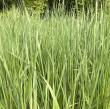
Upright. Pink-purple feathery summer blooms. Prefers moist soils. Tolerates clay and sandy soils. USDA 5-9
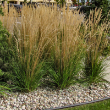
Height: 5 feet
Spread: 32 inches
Sunlight: full sun, partial shade
Hardiness Zone: 3a
Other Names: Feather Reed Grass
Description:
Dramatic red-copper plumes are eye catching during the early to mid summer months; a cool weather performer that looks wonderful in fresh or dried flower arrangements, borders or garden landscapes; heat tolerant and low maintenance
Ornamental Features:
Karl Foerster Reed Grass is primarily grown for its highly ornamental fruit. The tan seed heads are carried on showy plumes displayed in abundance from late summer to late winter. It features bold plumes of brick red flowers with coppery-bronze overtones rising above the foliage in mid summer. Its grassy leaves are green in color. The foliage often turns tan in fall. The gold stems can be quite attractive.
Landscape Attributes:
Karl Foerster Reed Grass is an herbaceous perennial grass with an upright spreading habit of growth. It brings an extremely fine and delicate texture to the garden composition and should be used to full effect.
This plant will require occasional maintenance and upkeep, and is best cut back to the ground in late winter before active growth resumes. It has no significant negative characteristics.
Karl Foerster Reed Grass is recommended for the following landscape applications:
- Vertical Accent
- Mass Planting
- General Garden Use
- Groundcover
- Naturalizing And Woodland Gardens
- Container Planting
- Planting & Growing
Karl Foerster Reed Grass will grow to be about 4 feet tall at maturity, with a spread of 32 inches. It tends to be leggy, with a typical clearance of 1 foot from the ground, and should be underplanted with lower-growing perennials. It grows at a medium rate, and under ideal conditions can be expected to live for approximately 10 years. As an herbaceous perennial, this plant will usually die back to the crown each winter, and will regrow from the base each spring. Be careful not to disturb the crown in late winter when it may not be readily seen!
This plant does best in full sun to partial shade. It is very adaptable to both dry and moist locations, and should do just fine under typical garden conditions. It is not particular as to soil type or pH. It is highly tolerant of urban pollution and will even thrive in inner city environments. This particular variety is an interspecific hybrid. It can be propagated by division; however, as a cultivated variety, be aware that it may be subject to certain restrictions or prohibitions on propagation.
Karl Foerster Reed Grass is a fine choice for the garden, but it is also a good selection for planting in outdoor pots and containers. With its upright habit of growth, it is best suited for use as a 'thriller' in the 'spiller-thriller-filler' container combination; plant it near the center of the pot, surrounded by smaller plants and those that spill over the edges. It is even sizeable enough that it can be grown alone in a suitable container. Note that when growing plants in outdoor containers and baskets, they may require more frequent waterings than they would in the yard or garden.
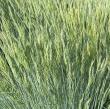
Blue foliage. Clumping. Heat tolerant. Semi-evergreen. USDA 4-8
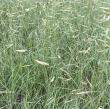
Blue Grama Grass 'Blonde Ambition' | Chartreuse flowers & tan Seed Heads. Naturalizing. USDA 3-10

Height: 5 feet
Spread: 3 feet
Sunlight: full sun partial shade
Hardiness Zone: 2b
Ornamental Features:
Switch Grass features airy plumes of rose flowers rising above the foliage in mid summer. The brick red seed heads are carried on showy plumes displayed in abundance from late summer to mid fall. Its grassy leaves are green in color. The foliage often turns yellow in fall.
Landscape Attributes:
Switch Grass is an herbaceous perennial grass with an upright spreading habit of growth. Its relatively fine texture sets it apart from other garden plants with less refined foliage.
This is a relatively low maintenance plant, and is best cut back to the ground in late winter before active growth resumes. It has no significant negative characteristics.
Switch Grass is recommended for the following landscape applications:
- Accent
- Mass Planting
- General Garden Use
Planting & Growing:
Switch Grass will grow to be about 4 feet tall at maturity, with a spread of 3 feet. It tends to be leggy, with a typical clearance of 1 foot from the ground, and should be underplanted with lower-growing perennials. It grows at a medium rate, and under ideal conditions can be expected to live for approximately 15 years. As an herbaceous perennial, this plant will usually die back to the crown each winter, and will regrow from the base each spring. Be careful not to disturb the crown in late winter when it may not be readily seen!
This plant does best in full sun to partial shade. It is very adaptable to both dry and moist locations, and should do just fine under typical garden conditions. It is considered to be drought-tolerant, and thus makes an ideal choice for a low-water garden or xeriscape application. It is not particular as to soil type, but has a definite preference for alkaline soils, and is able to handle environmental salt. It is somewhat tolerant of urban pollution. This species is native to parts of North America. It can be propagated by division.
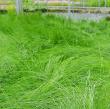
Height: 24 inches
Spread: 24 inches
Sunlight: full sun, partial shade
Hardiness Zone: 5b
Other Names: Stipa tenuissima, Needle Grass
Description:
An extremely delicate looking grass that provides gentle movement and sound in even the most delicate of breezes; a textural feast in the hands of a creative garden designer
Ornamental Features:
Mexican Feather Grass features airy plumes of gold flowers rising above the foliage in mid summer. Its attractive threadlike leaves are green in color. As an added bonus, the foliage turns a gorgeous harvest gold in the fall. The gold seed heads are carried on showy plumes displayed in abundance from late summer to late winter.
Landscape Attributes:
Mexican Feather Grass is a dense herbaceous perennial grass with an upright spreading habit of growth. It brings an extremely fine and delicate texture to the garden composition and should be used to full effect.
This is a relatively low maintenance plant, and is best cleaned up in early spring before it resumes active growth for the season. Gardeners should be aware of the following characteristic(s) that may warrant special consideration:
- Self-Seeding
Mexican Feather Grass is recommended for the following landscape applications:
- Mass Planting
- Rock/Alpine Gardens
- Border Edging
- General Garden Use
Planting & Growing:
Mexican Feather Grass will grow to be about 20 inches tall at maturity, with a spread of 24 inches. Its foliage tends to remain dense right to the ground, not requiring facer plants in front. It grows at a medium rate, and under ideal conditions can be expected to live for approximately 20 years. As an herbaceous perennial, this plant will usually die back to the crown each winter, and will regrow from the base each spring. Be careful not to disturb the crown in late winter when it may not be readily seen!
This plant does best in full sun to partial shade. It prefers dry to average moisture levels with very well-drained soil, and will often die in standing water. It is considered to be drought-tolerant, and thus makes an ideal choice for a low-water garden or xeriscape application. It is not particular as to soil type or pH. It is somewhat tolerant of urban pollution. This species is not originally from North America. It can be propagated by division.
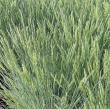
Powder blue foliage. Dense clumping. Semi-evergreen. USDA 4-8

Dark, smoky rose-purple flower spikes. Deep green arching foliage. USDA 5-8
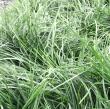
Cool season semi-evergreen ornamental grass. Deep, dark green foliage and airy, golden yellow flowers. USDA 4-9
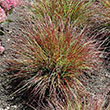
Bright red accent on blades. Compact. Tan seed heads. USDA 5-9